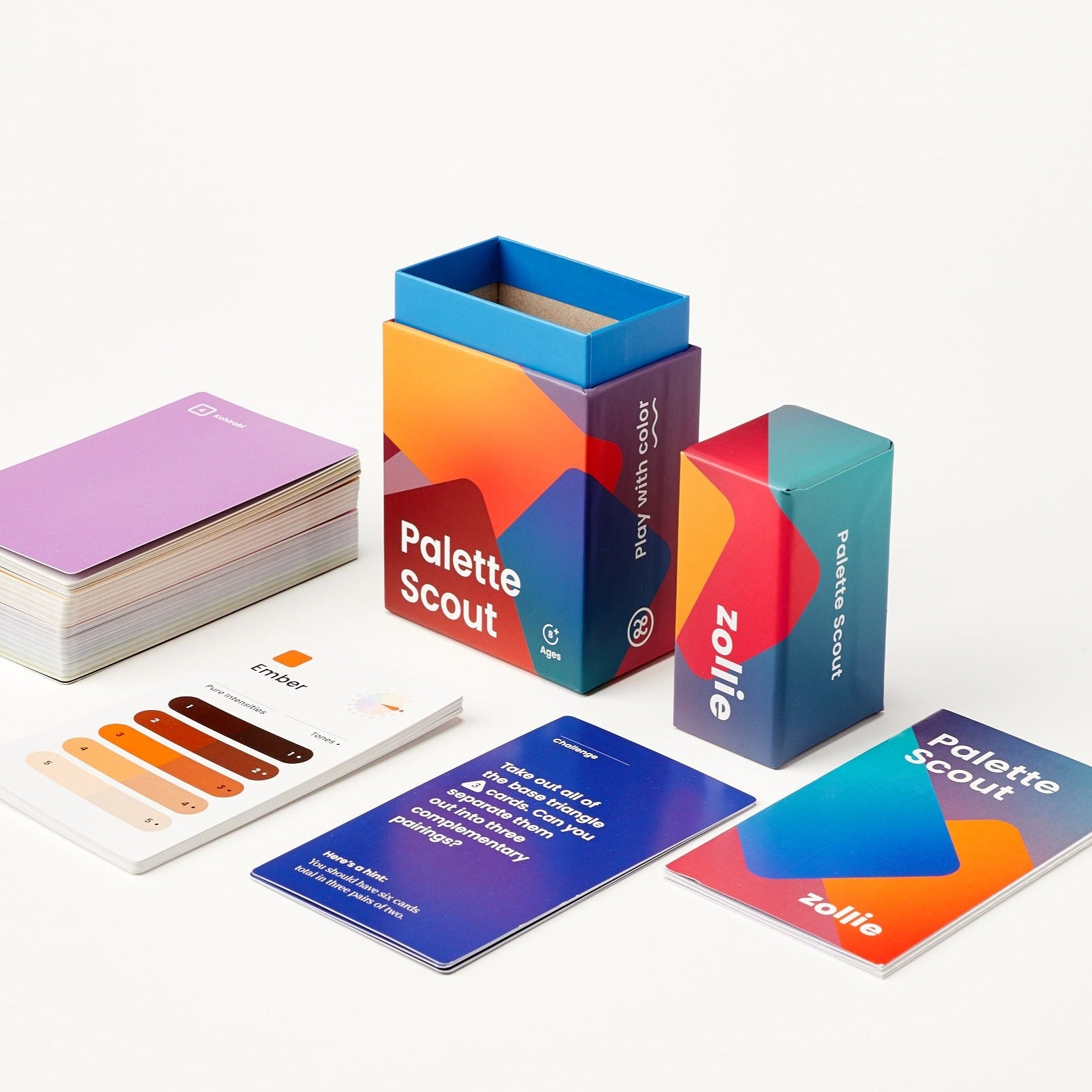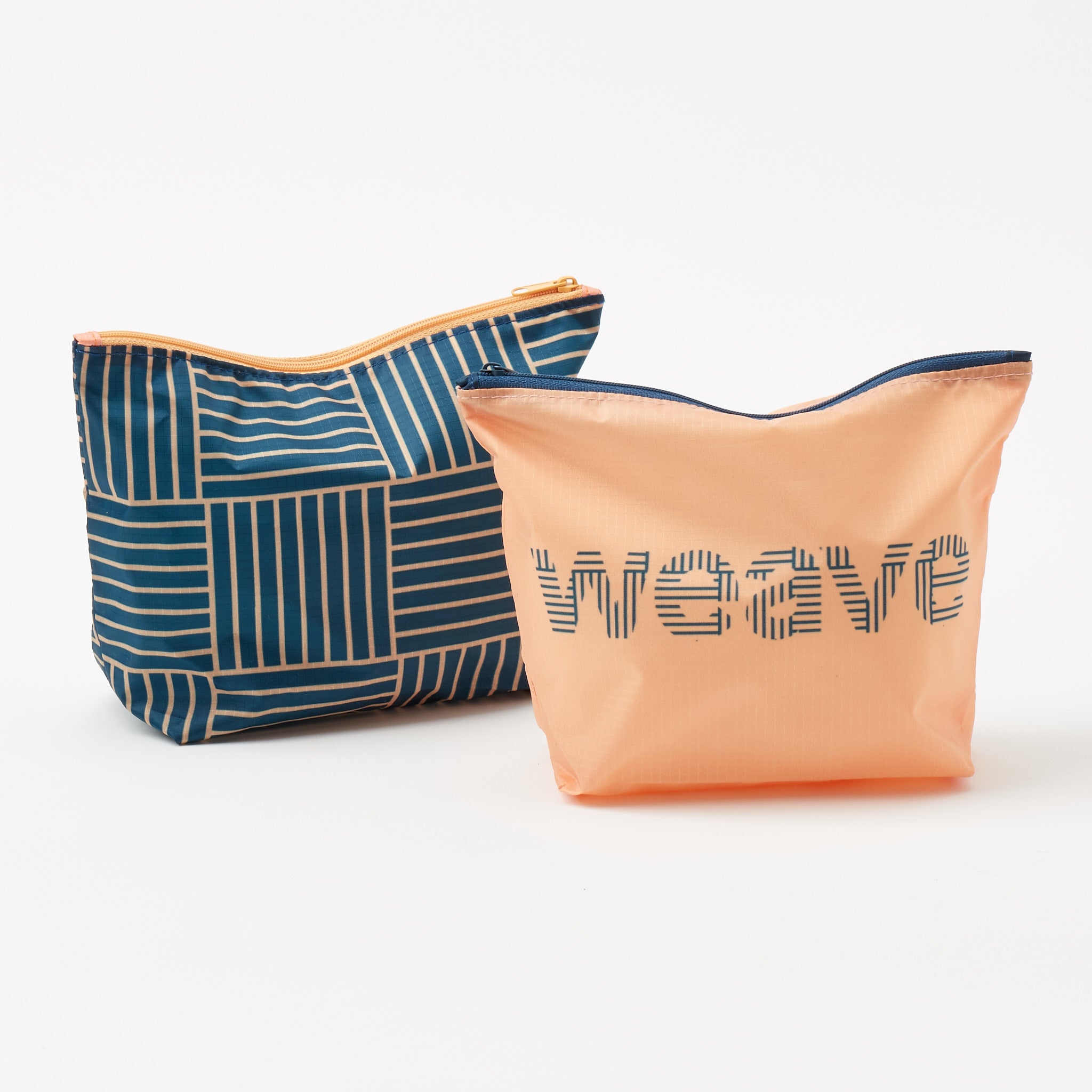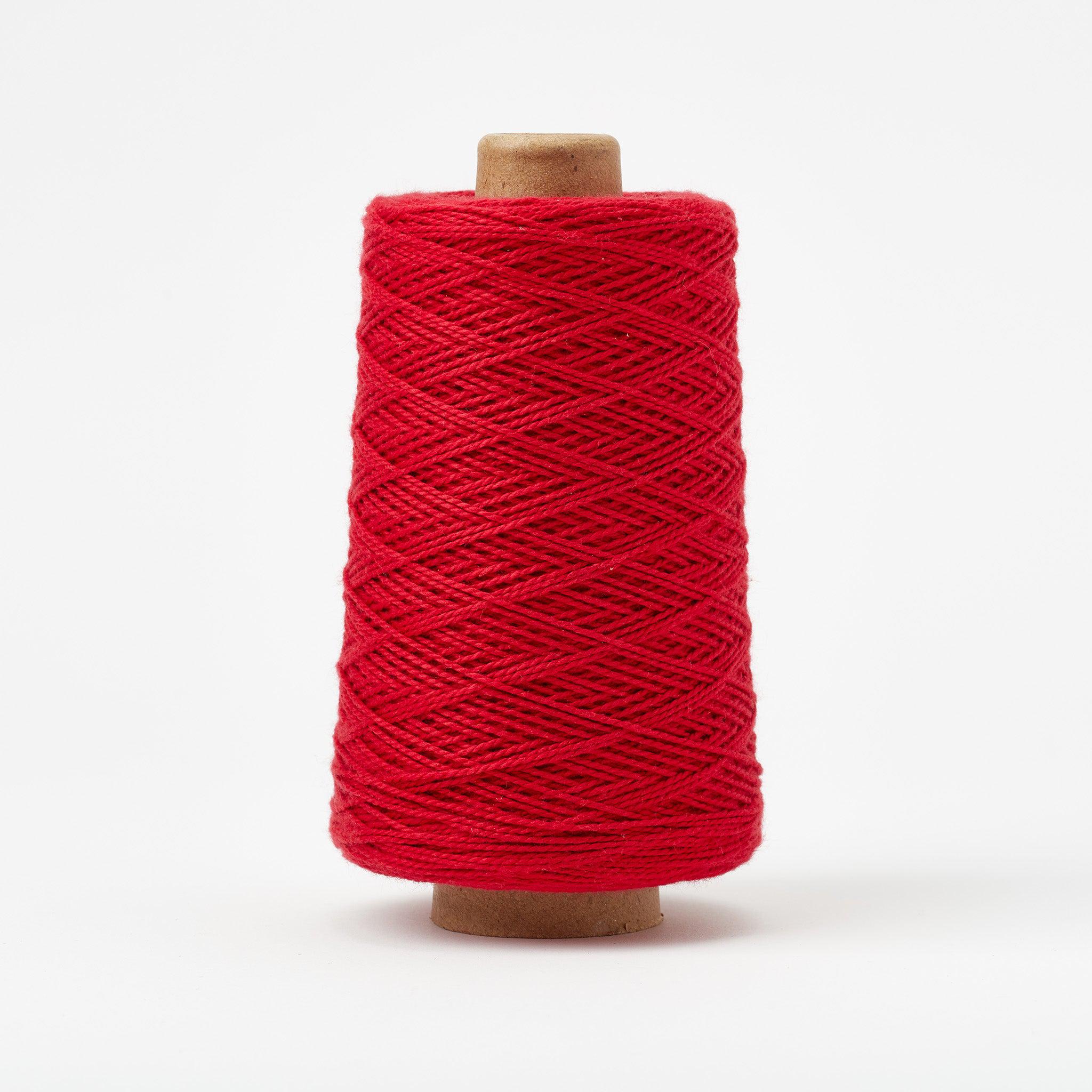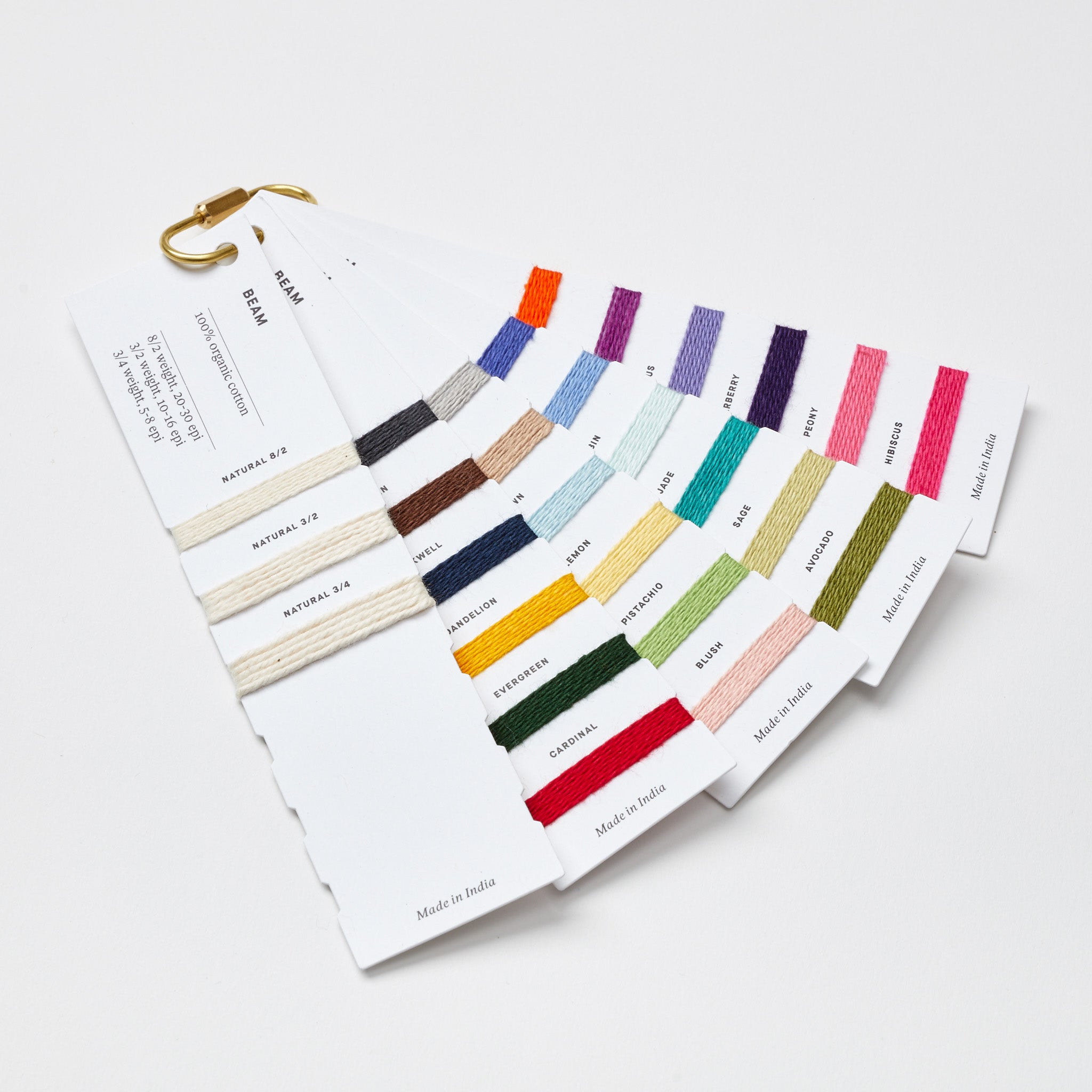Shopping Cart
*continental US addresses only

*continental US addresses only
Your Cart is Empty




Cotton is often one of the first fibers that new weavers use—and the first one intermediate and advanced weavers reach for too! That’s because of the many wonderful qualities of cotton: it’s easy to weave, stretchy, soft, and takes dye wonderfully. Since introducing Beam 3/2 Organic Cotton in 2021, weavers new and experienced have been enjoying learning and growing their skills with this American-grown cotton weaving yarn.
It’s with great pleasure that the Beam family gets a little bigger this autumn, with two new sizes added to the range: Beam 8/2 and Beam 3/4. Produced in 14 of the same colors you’re already familiar with, this expansion of Beam is going to help us weavers mix-and-match between sizes and give us a lot of material flexibility at the loom.
The Gist team asked me to test and compare the new and old sizes of Beam. Each weight offers so much possibility on its own as well as mixed together with other sizes or yarns from the Gist range, making this handful of samples is just the start of many explorations to come!
A note before we get started: I know that the way yarn is numbered can be very confusing for many weavers, but explaining it thoroughly would need a whole other article. The Coles notes (or Cliff's notes in the US) version is this: In a yarn like Beam 8/2, the first part of the fraction (the 8) refers to a standardized length per weight during manufacturing, while the second part (the 2) is the number of plies. Both Beam 8/2 and 3/2 are 2 plies, while 3/4 is plied from 4 strands.
Looking at the fractions you can also see that Beam 3/2 and 3/4 differ only in the number of plies — the base thickness of the thread (the first number, the 3) is the same. To make matters more confusing, the naming convention may be different depending on where you’re reading from, so 8/2 may be named as 2/8, even though it’s the same yarn!
The first new size of Beam Organic Cotton I’d like to show you is 3/4, which come in 4oz cones with 155 yards of yarn. I’m using three colors: Dandelion, Hibiscus, and Jam.
The first thing I noticed about Beam 3/4 is that it is thick! This is going to be a great beginner weight for rigid heddle weavers who want to make quick projects. I’m thinking big towels, placemats, and absorbent kitchen towels. It looks hard and tight on the cone, but after weaving and washing it blooms quite a bit, losing any stiffness.
With rigid heddle weavers in mind, I wove my first sample at 8 EPI, close to the 7.5 DPI reed that comes with Ashford Rigid Heddle Looms. In plain weave, Beam 3/4 worked up quickly and the finished square had a crisp feeling.
My next sample was a plain twill at 12 EPI. The thickness of the yarn made it really easy to see the pattern and get my beat right. The fabric is smooth and firm — I imagine it would make really nice home textiles like placemats and rugs.
8/2 cotton is probably one of the most common yarn sizes that weavers use and are familiar with. It’s the basis of many of Gist’s most popular projects, like the Halvdräll Towels, because it’s fine without being TOO fine — projects made from 8/2 are still quick to make and have a wonderful hand. 8/2 on its own is too thin for rigid heddle looms, but it can be mixed with other weights — more on that later.
Beam 8/2 comes in 4oz cones with 840 yards of yarn. My samples above used the Natural color, which is undyed.
The first thing I noticed about Beam 8/2 is that is feels finer and more elastic than other 8/2 yarns I’ve used in the past — it almost feels like smooth silk! My first two samples were a plain weave and straight twill sample at 20 EPI and it was a pleasure to weave. The resulting samples are so wonderful and soft I would be happy to wear them around my neck and next to my skin, not just as kitchen towels or other home textiles. Attention sewists: this would make beautiful yardage!
I also tried Duet, Beam, and Mallo as weft, as seen in the photo above. From bottom to top: Mallo, Beam 3/2, and Duet. I’m looking forward to experimenting with other Beam 8/2 colors and Duet and Mallo, I think there are many combinations to be discovered there.
If you’ve read my articles on weaving structures like Overshot or Monk’s Belt, you’ll know that many of these structures traditionally pair a finer yarn in the warp and ground weft with something thicker as the pattern. With three different sizes and a complimentary colour range, Beam is now a great option to use for structures like these.
I started with Beam 8/2 as my warp and tried both 3/2 and 3/4 as pattern weft in a floatwork/overshot style pattern.
I used the draft of my Bloom Table Squares pattern for my Beam 3/4 sample. Other than adjusting my sett (which I lowered to 18 EPI) and extending the border pattern a few extra picks to match the original project’s width, I wove the pattern as written. I love how different it looks from the original! Not only does Hibiscus have greater contrast against the Natural, but the floats stand up higher — the whole sample has greater texture than the original.
With Beam 8/2 as my ground weft, I also tested Beam 3/2, Duet and Mallo as pattern wefts. These samples became the basis of my third Weave Quarterly project, which comes out in December 2023—so you’ll just have to wait and see what they became, but rest assured it was good enough to keep!
You can also mix yarn weights in other ways, and Christine Jablonski’s Thick-and-Thin Hand Towels, a pattern featured in the Fall 2023 issue of Little Looms magazine, is a great way to test out two different sizes of Beam at once. This rigid heddle project is easy to adjust to use with Beam 8/2 — just swap out the commercial 8/2 cotton for Beam 8/2 in the color Toffee and you’re ready to go.
It’s not often that a favorite yarn comes in the same colors in multiple thicknesses, so I’m really excited to see what you weave with the new sizes of Beam! I loved testing these yarns and seeing how they behaved on the loom and in my finished cloth. Here are some other ideas to get you started:
